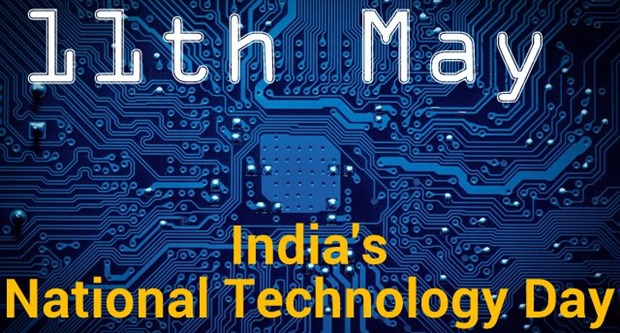On National Technology Day, Here Are India’s Top 6 Technology Fuelled Innovations

On May 11, 2008, India successfully tested 5 nuclear powered bombs in Pokhran, Rajasthan, to demonstrate it’s defense capability and might. This is regarded as one of the defining moments of Indian history, as the world was in awe and shock, not able to comprehend how a developing country was able to procure and carry forward nuclear tests with such precision and accuracy.
And more importantly, even the CIA and US Govt. couldn’t forecast these nuclear detonations.
Listen to Indian ex-PM Atal Bihari Vajpayee, declaring the success of Pokhran nuclear tests:
In order to commemorate this historical moment of India’s technological capability and expertise, Indian Government declared May 11 as National Technology Day. Various events and workshops are organized all across the nation to promote and create awareness about the power of Technology & it’s usage in Nation Building.
PM Modi congratulated all on this occasion, as he Tweeted that Technology has the power to transform lives.
Greetings to my fellow Indians on the occasion of National Technology Day. pic.twitter.com/pYabUHkih4
— Narendra Modi (@narendramodi) May 11, 2015
On this occasion, we present before you 6 innovations, fuelled by technology, which made India proud:
Contents
PARAM Super computer
During the 80s, US and some other European countries developed super computers, which were critical for developing satellites and nuclear weapons. These countries refused to transfer the knowledge of creating super computers to India, and it created a major issue in our progress.
It was in 1988, that the Indian Govt. established Centre for Development of Advanced Computing (C-DAC). They were given a budget of Rs 30 crore (which was the cost required to purchase and import a super computer from USA, if allowed) and a time duration of 3 years to create India’s own super computer.
In 1991, India created it’s own super computer: PARAM 8000, which surpassed several other super computers of that time; and directly placed us behind USA in terms of supercomputing power.
Last year, PARAM Super computers were declared as world’s most power efficient systems; and in 2013, 4 supercomputers were ranked in World’s fastest 100 super computers.
ISRO’s Mars Mission
On November 5th, 2013, India became Asia’s first and World’s 4th nation to launch its own Mars mission. Codenamed as Mangalyaan, the project needed only $73 million to complete, which is almost one-tenth of the budget of USA’s Mars mission and less than the budget of movie Gravity.
Mangalyaan is also the first instance when a country was able to send an interplanetary mission in it’s first attempt.
As of now, Mangalyaan is orbiting Mars and sending us crucial data related to space and its environment.
INS Kolkata & Light Combat Helicopter
6800 ton INS Kolkata is India’s largest ever warship which has been completely and independently Made in India. It was commissioned in August last year. Manufactured with a budget of Rs 3051 crore, this has been hailed as one of the world’s most powerful and lethal missile destroyer.
In 2010, HAL developed India’s first Light Combat Helicopter: TD-1 and then later TD-2 and TD-3, the technology of which was developed and researched completely in India. As per IAF, development of Light Combat Helicopter, independently in India, paved way for self-reliance in the defense sector.
Fiber Optics Revolution
Very few Indians are aware of the fact that an Indian played very important role in development and mass production of optical fiber cable, which paved the way for Internet expansion and telecommunication explosion.
Dr. Narinder Singh Kapany is an Indian-born American physicist, who is considered as one of the founders of fiber optics. He has worked extensively in the areas of fibre-optics communications, lasers, biomedical instrumentation, solar energy and pollution monitoring and currently holds more than 100 patents.
He is described as a brilliant tech-entrepreneur and researcher, who missed the Nobel Prize by a small fraction.
Team Indus & Robots on Moon
Early this year, an Indian startup named Team Indus, became the first from the nation to win $1 million to land a robot on the surface of Moon. This space startup from India participated in a competition by Google called Google X and competed against 26 teams from all over the world to win this competition.
By doing so, Team Indus will become the first private company in the world to have landed a robot on the Moon.
Atomic Power to Help Agriculture
In 2013, Bhabha Atomic Research Centre (BARC) announced that they have achieved breakthrough in agriculture production using radioactivity and atomic power. This was one of the most exciting developments to have occurred in India and Asia, based on the applications of technology and nuclear power.
Using radiation technologies, BARC was able to develop new variants of crops such as cereals, pulses and oil seeds which can not only resist insects and bugs, but can also last long and mature early. 15 new varieties of grounds-nut, 3 new varieties of mustard, two new forms of soyabean and one new sunflower variant were developed using technology.
Besides these, Indian Council of Agricultural Research (ICAR) has created new milestones of agriculture research, harnessing technology and innovative ideas.
Despite such stellar tech innovations, there is a long way to go. We are still ranked 66th on the Global Innovation Index; and lots of new research and inventions which should happen in India ends up in a Western world.
We hope that on this National Technology Day, Indian innovators and technologists come up with far advanced, better and robust applications which can transform lives.
